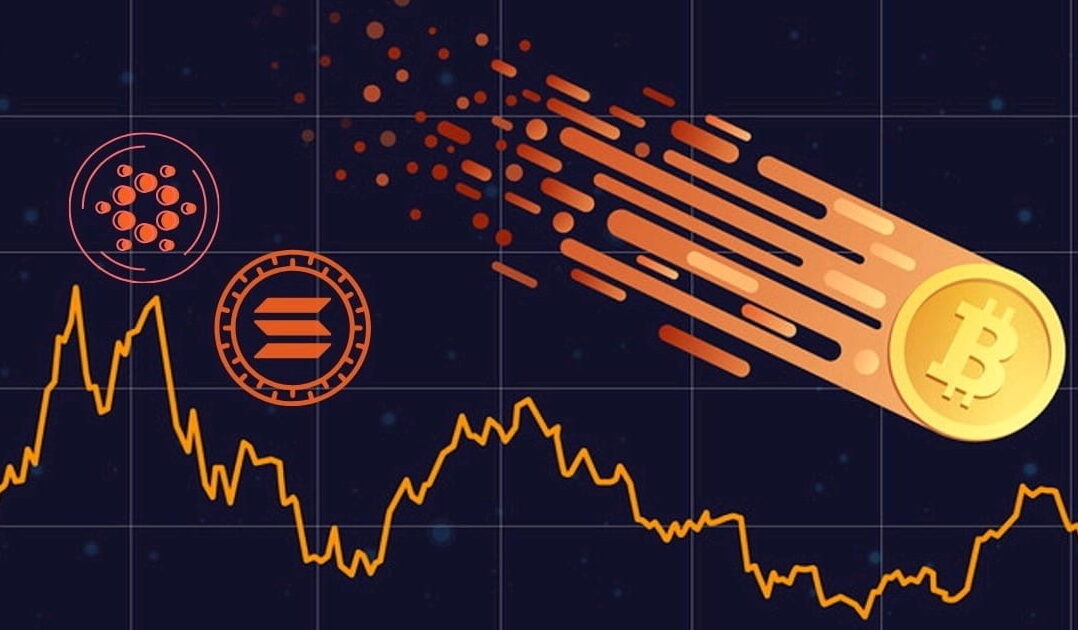The eternal debate between traditional and digital assets has never been more relevant than today’s bitcoin price vs gold investment comparison. As investors navigate uncertain economic waters, the choice between Bitcoin’s explosive growth potential and gold’s time-tested stability presents a compelling dilemma. Both assets have served as hedges against inflation and economic uncertainty, yet they couldn’t be more different in their fundamental characteristics.
In recent years, Bitcoin has emerged as “digital gold,” challenging the precious metal’s 5,000-year reign as the ultimate store of value. While gold has preserved wealth through countless economic cycles, Bitcoin’s meteoric rise from pennies to tens of thousands of dollars has captured global attention. This comprehensive analysis examines performance metrics, risk factors, liquidity considerations, and future prospects to help you make an informed investment decision. Understanding the nuances of each asset’s behavior during different market conditions is crucial for building a resilient investment portfolio that can weather economic storms while capitalizing on growth opportunities.
Historical Performance Analysis: Bitcoin vs Gold Returns
Bitcoin’s Explosive Growth Trajectory
Bitcoin’s price history since 2009 reads like a financial fairy tale, with returns that dwarf traditional investments. From its humble beginnings at less than $1, Bitcoin reached an all-time high of nearly $69,000 in November 2021, representing astronomical gains that no traditional asset class has ever matched.

The cryptocurrency’s performance has been characterized by dramatic bull and bear cycles. During the 2017 bull run, Bitcoin gained over 1,300% in a single year. Even after significant corrections, long-term holders have enjoyed returns that make traditional investments pale in comparison. However, this exceptional performance comes with equally exceptional volatility.
Gold’s Steady Appreciation Over Decades
Gold, conversely, has demonstrated more predictable long-term appreciation. Over the past 50 years, gold has averaged annual returns of approximately 7-8%, effectively preserving purchasing power against inflation. The precious metal’s value has grown from $35 per ounce in 1971 to over $2,000 in recent years.
Gold’s performance shines during periods of economic uncertainty. During the 2008 financial crisis, while stock markets plummeted, gold prices surged as investors sought safe-haven assets. This counter-cyclical behavior makes gold an excellent portfolio diversifier.
Risk Assessment and Volatility Comparison
Bitcoin’s High-Risk, High-Reward Nature
Bitcoin’s volatility is legendary in financial circles. Daily price swings of 10-20% are common, and monthly variations can exceed 50%. This extreme volatility creates both tremendous opportunities and significant risks for investors.
The cryptocurrency market operates 24/7, unlike traditional markets, leading to continuous price discovery and heightened volatility. Regulatory announcements, institutional adoption news, and macroeconomic factors can trigger massive price movements within hours. Investors considering Bitcoin must have strong risk tolerance and avoid investing more than they can afford to lose. The potential for total loss, while unlikely given Bitcoin’s growing institutional adoption, remains theoretically possible.
Gold’s Stability and Lower Risk Profile
Gold exhibits significantly lower volatility compared to Bitcoin. Daily price movements typically range from 1-3%, making it suitable for conservative investors seeking wealth preservation rather than explosive growth.
The precious metal’s 5,000-year history as a store of value provides confidence in its long-term viability. Unlike Bitcoin, which faces technological and regulatory risks, gold’s physical properties and universal acceptance make it virtually immune to obsolescence. However, gold’s stability comes at the cost of lower returns. Investors seeking significant wealth appreciation may find gold’s conservative performance insufficient for their goals.
Bitcoin Price vs Gold Investment Comparison: Liquidity and Accessibility
Bitcoin’s Digital Advantages
Bitcoin offers superior liquidity compared to physical gold. Cryptocurrency exchanges operate around the clock, allowing investors to buy or sell Bitcoin instantly at market prices. Transaction settlement typically occurs within minutes to hours, depending on network congestion.
The digital nature of Bitcoin eliminates storage concerns and associated costs. Investors can hold Bitcoin in digital wallets without worrying about physical security, insurance, or storage fees that plague gold investments. Furthermore, Bitcoin’s divisibility allows for precise investment amounts. Investors can purchase fractions of Bitcoin, making it accessible to those with limited capital.
Gold’s Traditional Investment Channels
Gold investment options include physical bullion, ETFs, mining stocks, and futures contracts. Physical gold ownership provides tangible asset security but involves storage and insurance costs that can erode returns.
Gold ETFs offer easier liquidity than physical gold while maintaining exposure to price movements. However, ETF holdings represent claims on gold rather than direct ownership, introducing counterparty risk. The gold market’s maturity provides stability and widespread acceptance among financial institutions, making it easier to use as collateral or convert to cash during emergencies.
Market Dynamics and Price Drivers
Bitcoin’s Technology-Driven Value Proposition
Bitcoin’s value proposition rests on its revolutionary blockchain technology, limited supply of 21 million coins, and growing institutional adoption. Major corporations like Tesla, MicroStrategy, and Square have added Bitcoin to their treasury reserves, legitimizing it as a corporate asset.
The cryptocurrency benefits from network effects – as more users, merchants, and institutions adopt Bitcoin, its utility and value increase. Lightning Network developments promise to enhance Bitcoin’s scalability and transaction speed. Regulatory clarity in major markets could unlock additional institutional investment, potentially driving prices higher. Conversely, restrictive regulations pose downside risks to Bitcoin’s growth trajectory.
Gold’s Economic and Geopolitical Sensitivity
Gold prices respond to inflation expectations, currency debasement, and geopolitical tensions. During periods of economic uncertainty, gold typically outperforms as investors seek safe-haven assets.
Central bank policies significantly impact gold prices. Expansionary monetary policies and low interest rates generally support higher gold prices, while aggressive tightening cycles can pressure the precious metal. Industrial demand for gold in electronics, jewelry, and other applications provides a fundamental floor for prices, unlike Bitcoin, which lacks significant industrial utility.
Portfolio Integration Strategies
Optimal Allocation Considerations
Financial advisors often recommend allocating 5-10% of investment portfolios to alternative assets like gold or Bitcoin. Conservative investors might favor gold for its stability, while younger investors with longer time horizons might prefer Bitcoin’s growth potential.
A balanced approach might include both assets, with gold providing stability and Bitcoin offering growth potential. The specific allocation depends on individual risk tolerance, investment timeline, and financial goals. Regular rebalancing becomes crucial when holding volatile assets like Bitcoin alongside stable ones like gold. Predetermined rebalancing triggers can help maintain desired allocation percentages.
Tax Implications and Considerations
Bitcoin and gold face different tax treatments in most jurisdictions. Bitcoin is typically classified as property, with gains subject to capital gains taxation. The holding period determines whether gains qualify for long-term or short-term tax rates.
Gold investments also face capital gains treatment, but certain forms like collectible coins may face higher tax rates. ETFs and mining stocks follow different tax rules than physical gold ownership. Investors should consult tax professionals to understand jurisdiction-specific implications and optimize their investment structure for tax efficiency.
Future Outlook and Emerging Trends
Bitcoin’s Technological Evolution
Bitcoin continues evolving with improvements like the Lightning Network, Taproot upgrade, and potential smart contract capabilities. These developments could enhance Bitcoin’s utility beyond simple value storage.

Environmental concerns surrounding Bitcoin mining are driving innovation in renewable energy adoption and more efficient mining technologies. Successful resolution of these concerns could remove a significant barrier to institutional adoption. The potential approval of Bitcoin ETFs in major markets could dramatically increase accessibility and institutional investment, potentially driving long-term price appreciation.
Gold’s Enduring Relevance
Despite digital asset emergence, gold maintains relevance as a inflation hedge and crisis asset. Central banks continue accumulating gold reserves, supporting long-term demand.
Technological advances in gold mining and recycling could impact supply dynamics. Additionally, growing industrial applications in renewable energy technologies may increase demand. The precious metal’s role in emerging market central bank reserves remains strong, providing continued institutional demand regardless of Western market sentimen
Final Thought
The bitcoin price vs gold investment comparison reveals two fundamentally different approaches to wealth preservation and growth. Gold offers time-tested stability and inflation protection, while Bitcoin provides explosive growth potential with significantly higher risk. Smart investors might consider both assets as complementary rather than competing investments. Gold can anchor a portfolio’s stability while Bitcoin provides growth potential that traditional assets cannot match.
Whether you choose the ancient store of value or the digital revolution depends on your risk tolerance, investment timeline, and financial objectives. Consider consulting with financial advisors to determine the optimal allocation for your specific situation. Ready to make your investment decision? Research reputable platforms for purchasing either asset and consider starting with a small allocation to test your comfort level with each investment’s unique characteristics.


